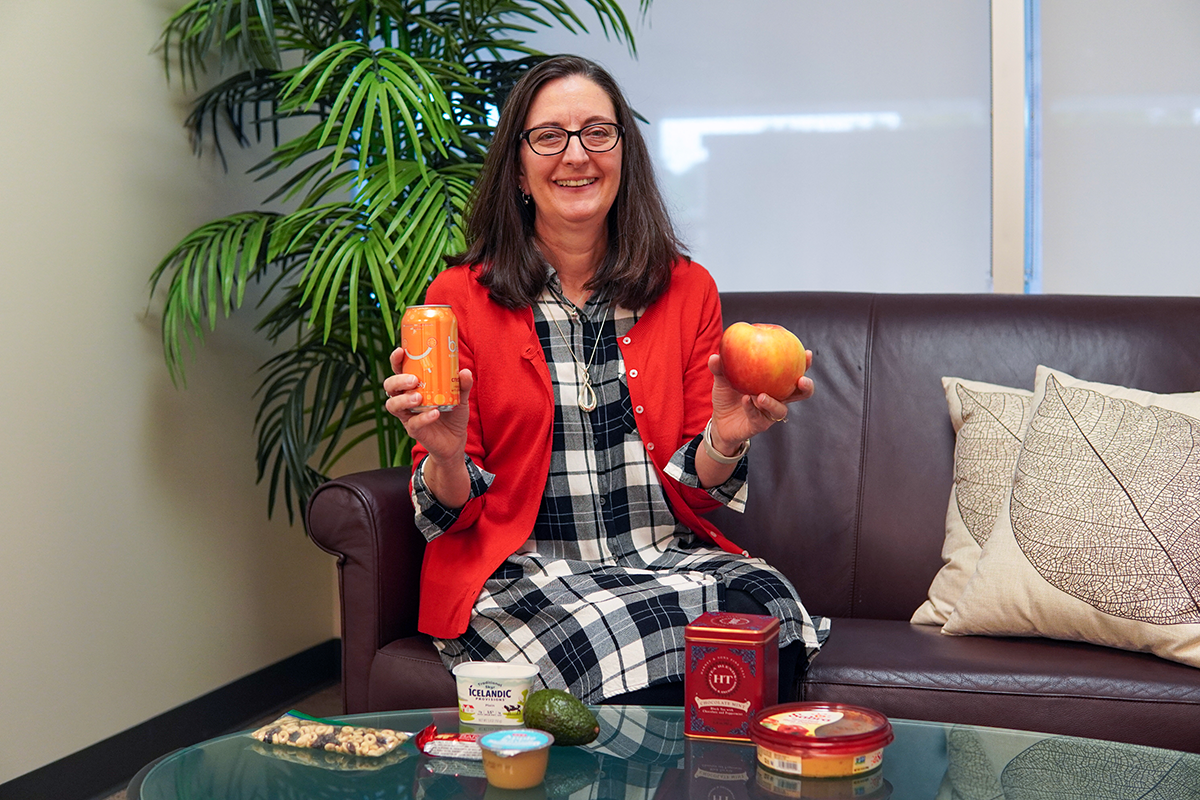
It’s holiday time! But it’s no time to take a holiday from healthy eating. While most of these tips are helpful year-round, some are specific for the holiday season. Sticking to a plan may help relieve the stress and unhealthy habits often associated with this time of year. Below are some ideas to help manage the challenges that often accompany the holidays.
Think of strategies for success
Consider situations where you are more likely to get “off track” (shopping, parties, events) and plan. For example, pack healthy snacks (nuts, string cheese, fruit) to keep your energy up while shopping. Or meal prep on the weekends when you know the week ahead will be busy with events at school and work (band concerts, athletic events, work parties).
Eat/drink what you love, not out of obligation
Choose small portions of the foods or beverages you only eat at this time of year and savor each bite. Give yourself permission not to eat something you don’t love.
Take the focus off food
Instead of a potluck party where attendees bring food, have them bring an unwrapped toy to donate. Adopt an angel from an angel tree or adopt a family with friends or co-workers. Attend religious events to celebrate the season. Get friends together to sing holiday songs at an older adult facility.
Have a game plan
- On the day of an event, eat a healthy breakfast (and lunch) that includes protein and fruits/vegetables. Stay hydrated. Avoid skipping meals to save calories. This often leads to hunger and overeating.
- Bring a healthy dish (lean protein, vegetables, fruit) to share at the event. Be “in the moment” by enjoying conversations with family and friends. Limit the event to that day by giving away or not taking home leftovers.
Stay active
Physical activity is known for physical and mental health benefits like stress reduction. Get family and friends involved in a turkey trot or walk through the neighborhood to look at holiday lights.
Sleep!
According to the Sleep Foundation, consistent, quality sleep helps with physical and mental health, including improved mental function and weight gain prevention.
Practice food swaps
Think about swapping lower-calorie food when you can. There are a lot of options that will flavor your food with lower calories. Below are some ideas:
At home:
- Plain, non-fat Greek yogurt in place of sour cream.
- Fat-free/low-fat dairy in place of whole-fat dairy products.
- Spices, herbs and garlic in place of salt.
- Avocado in place of solid fats (butter, margarine).
- Use unsweetened applesauce or mashed bananas in place of sugar in baked goods.
At a party:
- Hummus (1 tbsp = 36 kcal) instead of a cream cheese dip (1 tbsp = 90 kcal)
- Roasted turkey (3 oz = 119 kcal) instead of prime rib (3 oz = 340 kcal)
- Fresh green beans (1 cup = 44 kcal) instead of green bean casserole (1 cup = 115 kcal)
- Roasted sweet potatoes (1 medium = 103 kcal) instead of sweet potato casserole (2/3 cup = 350 kcal)
- Baked apple (1 medium = 91 kcal) instead of apple pie (1 slice 8” pie = 350 kcal)
- Sparkling water with raspberries (3 berries = 3 kcal) instead of champagne (5 oz = 125 kcal)
- Cinnamon flavored tea (0 kcal) instead of hot chocolate (1 packet = 80 kcal)
While it is important to look at the entire nutrient content of a food, only the calorie information was included for comparison. Nutrition information from USDA Food Data Central.
– Claire Edgemon, senior registered dietitian in the Department of Surgery
